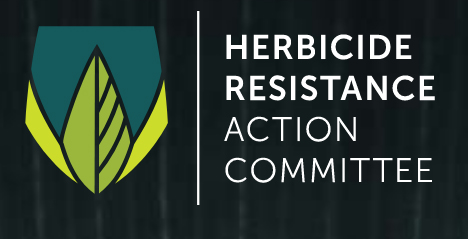INTERNATIONAL HERBICIDE-RESISTANT WEED DATABASE
|
|
Pasto Amargo (Eriochloa punctata) is a monocot weed in the Poaceae family. In Bolivia this weed first evolved resistance to Group 1 (Legacy A) herbicides in 1997 and infests Soybean. Group 1 (Legacy A) herbicides are known as Inhibition of Acetyl CoA Carboxylase
(Inhibition of Acetyl CoA Carboxylase
). Research has shown that these particular biotypes are resistant to fluazifop-butyl, and haloxyfop-methyl and they may be cross-resistant to other Group 1 (Legacy A) herbicides. The 'Group' letters/numbers that you see throughout this web site refer to the classification of herbicides by their site of action. To see a full list of herbicides and HRAC herbicide classifications click here.
|
|
|
|
|
| Common Name | Pasto Amargo | | Species | Eriochloa punctata | | Group | Inhibition of Acetyl CoA Carboxylase
HRAC Group 1 (Legacy A)
| | Herbicides | fluazifop-butyl, and haloxyfop-methyl | | Location | Bolivia, Santa Cruz | | Year | 1997 | | Situation(s) | Soybean | | Contributors - (Alphabetically) | Pablo Franco | |
|
|
|
| | Pablo Franco | | Santa Cruz State; provinces (counties): Obispo Santiesteban, Sara, Guarayos, Ichilo, ChiquitosEdit this Note | Add New Note |
| |
| | Pablo Franco | | The tropical grass, carib grass is frequently found in dry seeded rice, soya bean, maize, and cotton in Santa Cruz State, Bolivia. Dense populations of carib grass are found on most farms in soya bean following widespread and continued use of post-emergence herbicides which inhibit the enzyme ACCase. Farmers have recently reported difficulty in controlling carib grass with recommended doses of fluazifop-p. For fenoxaprop the resistance index was 8.8 times the LD of the biotype San Pedro. The resistance indexes of Monte Cristo were 1.04, 1.25, 1.5, 1.76, 2.5, 2.5, 4.5 for butroxydim, propaquizafop, clodinafop, quizalofop, haloxyfop, cyhalofop, cycloxydim, respectively.Edit this Note | Add New Note |
|
|
|
|
| | Greenhouse, and Laboratory trials comparing a known susceptible Pasto Amargo biotype with this Pasto Amargo biotype have been used to confirm resistance. For further information on the tests conducted please contact the local weed scientists that provided this information. |
| |
| | Genetic studies on HRAC Group 1 resistant Pasto Amargo have not been reported to the site. There may be a note below or an article discussing the genetics of this biotype in the Fact Sheets and Other Literature |
| |
| | The mechanism of resistance for this biotype is either unknown or has not been entered in the database. If you know anything about the mechanism of resistance for this biotype then please update the database. |
| |
| | There is no record of differences in fitness or competitiveness of these resistant biotypes when compared to that of normal susceptible biotypes. If you have any information pertaining to the fitness of Group 1 (Legacy A) resistant Pasto Amargo from Bolivia please update the database. |
|
|
|
|
| BASF Bolivia
Research and Development
Av. San Martin No 1800
of 302
Santa Cruz, de la sierra 237, Santa Cruz
Bolivia
Email Pablo Franco |
|
|
|
|
| Drag a column header and drop it here to group by that column |
|
|
1
| Bolivia | Bolivia | | 1997 |
Soybean
|
fluazifop-butyl, and haloxyfop-methyl
| 4 |
Inhibition of Acetyl CoA Carboxylase
( HRAC Group 1 (Legacy A)
| 176 | Eriochloa punctata | Pasto Amargo | 555 |
|
 |
PERMISSION MUST BE OBTAINED FIRST if you intend to base a significant portion of a scientific paper on data derived from this site. Citation:
Heap, I. The International Herbicide-Resistant Weed Database. Online.
. Available
www.weedscience.org
Copyright © 1993-
WeedScience.org All rights reserved. Fair use of this material is encouraged. Proper citation is requested.
|
|